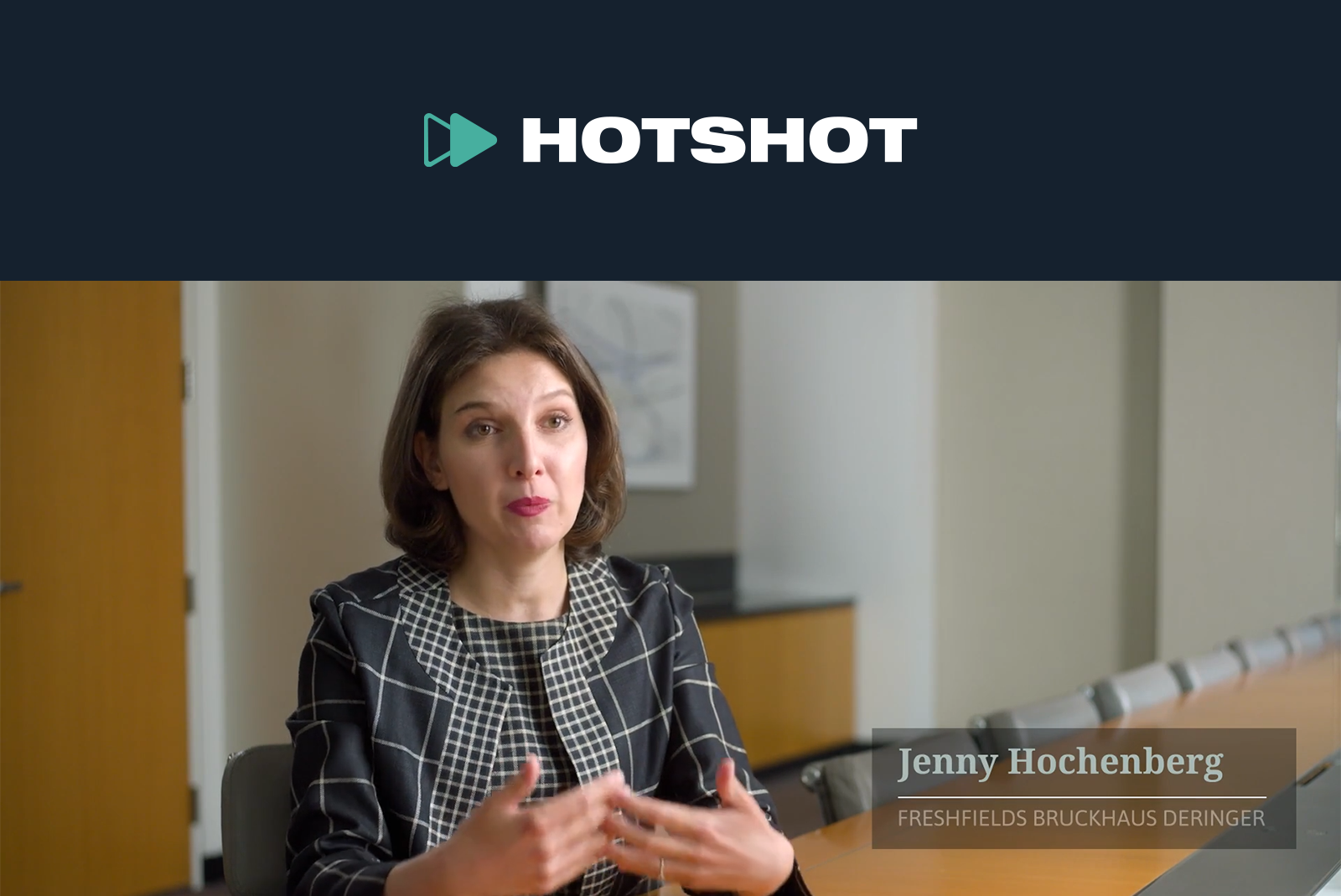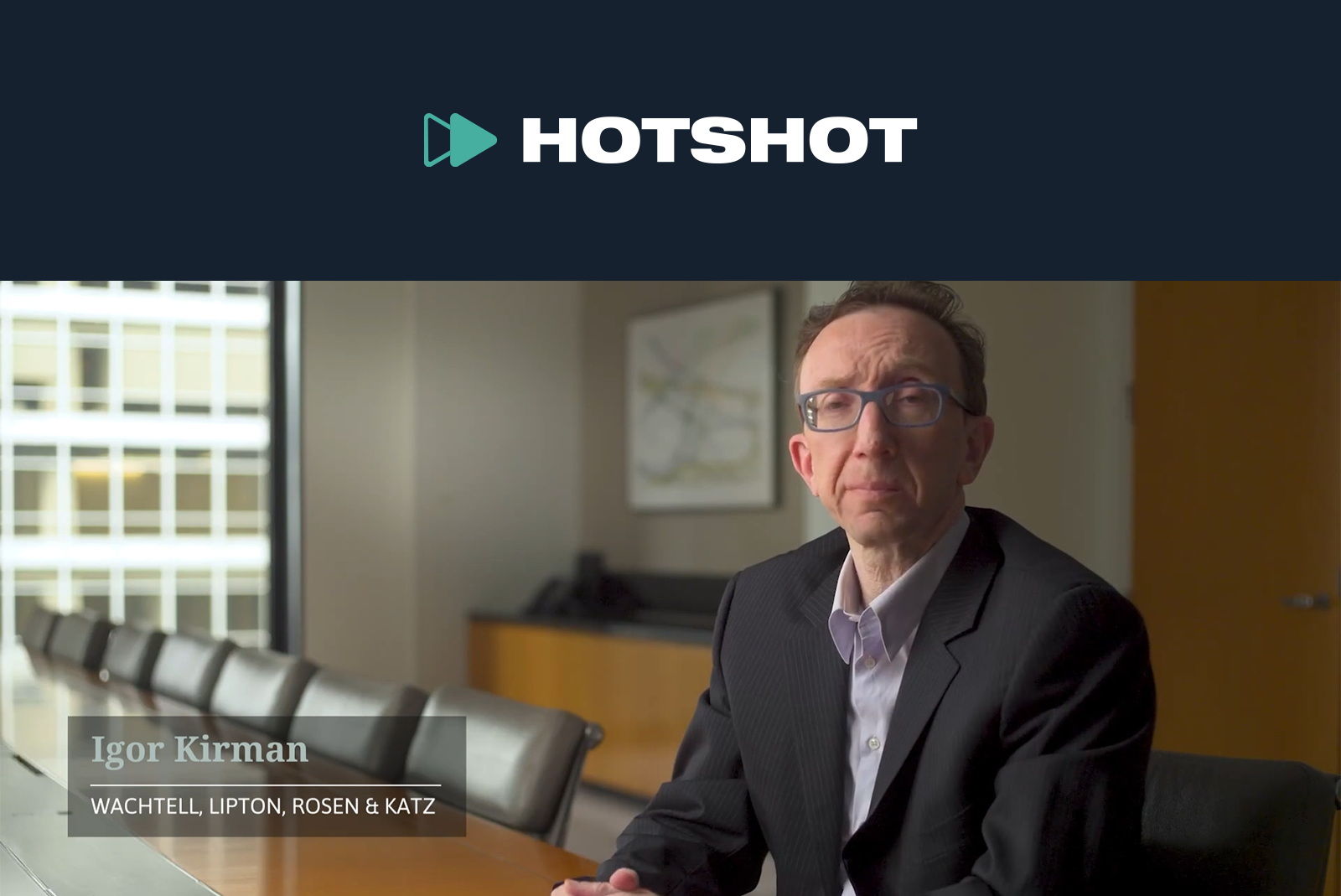
Introduction
On June 22, 2023, the United States Supreme Court decided two consolidated cases that may have a significant impact on the enforcement of foreign arbitral awards in the United States. In a majority opinion authored by Justice Sonia Sotomayor, the Supreme Court held that in certain circumstances, a foreign plaintiff may bring a private action under the Racketeer Influenced and Corrupt Organizations Act (“RICO”) for the purpose of collecting an international arbitration award. The Court’s decision in these cases—Yegiazaryan v. Smagin (No. 22-381) & CMB Monaco v. Smagin (No. 22-383)—dealt primarily with RICO’s “domestic injury” requirement, finding that a party’s actions to delay and prevent the execution of a U.S. judgement confirming a foreign arbitral award can satisfy that requirement. In doing so, the decision may pave the way for a powerful new avenue for foreign individuals and companies to reach U.S.-based assets for the purpose of collecting foreign arbitration awards.
What Is RICO?
RICO is a criminal and civil statute that Congress enacted in 1970 to combat the influence of “organized crime” on American commerce. Congress initially conceived RICO as a way “to prevent ‘known mobsters’ from infiltrating legitimate businesses.”[1] RICO penalized any person involved in an enterprise of racketeering activity in violation of certain federal and state criminal laws (called “predicate acts”) such as bribery, fraud, embezzlement, and money laundering.[2] To prove a RICO claim, based on any combination of predicate acts, a RICO plaintiff must show that the conduct of an enterprise, through a pattern of racketeering activity, caused injury to the plaintiff’s business or property.[3]
RICO also provides a private right of action to “[a]ny person injured in his business or property by reason of a violation of” RICO.[4] There is strong incentive for a civil plaintiff to bring a RICO claim because Congress mandated that prevailing civil RICO plaintiffs shall recover triple the actual damages caused by the defendant’s racketeering activity plus the costs of litigation, including attorneys’ fees.[5] Accordingly, over the years RICO has taken on countless interpretations. It has been described as “one of the nation’s most powerful laws.”[6] Courts have noted its “breathtaking scope,”[7] labeled it “an unusually potent weapon,”[8] and described it as “the litigation equivalent of a thermonuclear device.”[9]
The Domestic Injury Requirement for Civil RICO Claims and “Tangible Property”
RICO is notorious for its numerous elements and, thus, rigorous pleading standards. But there is an additional step for individual plaintiffs who are not U.S. residents or corporate plaintiffs that do not have their principal place of business in the United States. To establish standing under RICO, such a foreign plaintiff must demonstrate that it suffered a “domestic injury” to its business or property. That is, the plaintiff must establish an injury that was suffered in the United States, rather than abroad.
The Supreme Court first addressed RICO’s “domestic injury” requirement in RJR Nabisco, Inc. v. European Community.[10] There, foreign plaintiffs filed a RICO suit against the tobacco corporation RJR Nabisco alleging international money laundering (including acts involving foreign drug traffickers and the sale of cigarettes to Iraq). The Supreme Court established that for foreign plaintiffs asserting a RICO claim there is a presumption against extraterritoriality, and that presumption requires a plaintiff to prove a “domestic injury” in support of a RICO action.[11] The Court found that RICO is not limited solely to domestic schemes, but it remains that “not . . . every foreign enterprise will qualify.”[12]
In 2017, the Second Circuit addressed the “domestic injury” requirement in Bascuñán v. Elsaca. In that case, the plaintiff, a resident of Chile, alleged a RICO claim based on allegations that his cousin stole millions of dollars from his U.S. bank account through various schemes.[13] The district court concluded that there was no “domestic injury” because the plaintiff suffered economic injuries only that he felt at his place of residence, which was Chile, not the United States.[14]
The Second Circuit, however, reversed this decision, holding that “[w]here the injury is to tangible property [money in a U.S. bank account], we conclude that, absent some extraordinary circumstance, the injury is domestic if the plaintiff’s property was located in the United States when it was stolen or harmed, even if the plaintiff himself resides abroad.”[15] Because there was a domestic injury to tangible property, the Second Circuit’s decision in Bascuñán allowed the RICO claim to proceed.[16]
Neither Bascuñán nor RJR Nabisco, however, addressed how the presumption against extraterritoriality applies to intangible property belonging to a foreign plaintiff, thus leaving an open question that the Supreme Court addressed in Yegiazaryan v. Smagin, which involved the intangible property of a judgment enforcing a foreign arbitral award.
Armada in the Seventh Circuit—Where Does the Plaintiff Live?
In 2018, the Seventh Circuit, in Armada (Sing.) PTE Ltd. v. Amcol Int’l Corp., affirmed that a judgment of a United States District Court recognizing a foreign arbitral award is “intangible property.”[17] Per the decision in Armada, the “location” of an injury to that intangible property had to be the foreign claimant’s home abroad.[18]
The plaintiff in Armada (a Singaporean shipping company) was awarded more than $70,000,000 in two awards in ad hoc arbitration in London.[19] The Southern District of New York recognized those awards and entered a judgment, and the plaintiff sought to enforce its judgment by filing maritime attachment proceedings.[20] When those efforts proved unsuccessful, the plaintiff filed a RICO action alleging that it suffered an injury to its property (i.e., its recognized judgment) and that the defendants “by means of racketeering activity, injured that property by divesting [the defendant] of assets, thereby making the judgment and other claims against [the defendant] uncollectable.”[21]
The Seventh Circuit held that the foreign plaintiff’s “principal place of business [was] in Singapore, so any harm to [the plaintiff’s] intangible bundle of litigation rights was suffered in Singapore.”[22] Therefore, there was no domestic injury to the plaintiff’s intangible property and the plaintiff “failed to plead a plausible claim under civil RICO.”[23]
Humphrey in the Third Circuit—Where Did the Plaintiff Suffer?
Later in 2018, the Third Circuit scrutinized Armada and departed from it in Humphrey v. GlaxoSmithKline PLC.[24] The plaintiffs in Humphrey were American cofounders of an investigation firm based in China.[25] Following a Chinese regulatory investigation that resulted in the arrest, conviction, and deportation of the plaintiffs back to the United States,[26] the plaintiffs sued for civil RICO, alleging that their business was “destroyed and their prospective business ventures eviscerated.”[27] The district court found there was no domestic injury because “Plaintiffs’ business was in China, their only offices were in China, no work was done outside of China, Plaintiffs resided in China, and … any destruction of Plaintiffs’ business occurred while Plaintiffs were imprisoned in China by Chinese authorities.”[28]
The Third Circuit affirmed. In doing so, however, it rejected the residency-based rule from Armada and opted instead for a multi-factor test to determine when injury to intangible property is a “domestic injury.”[29] The court’s inquiry “focus[ed] primarily upon where the effects of the predicate acts were experienced.”[30] There were several factors the Humphrey court deemed relevant to consider, including (but not limited to):
- where the injury arose;
- the plaintiff’s residence or principal place of business;
- where any alleged services were provided;
- where the plaintiff received or expected to receive benefits of those services;
- where any business agreements were entered into;
- the laws binding those agreements; and
- the location of the activities in the underlying dispute.[31]
Applying these factors, the Third Circuit concluded there was no domestic injury because the alleged harm to the plaintiffs’ business occurred mainly abroad.[32]
Smagin in the Ninth Circuit—A “Context-Specific” Inquiry
The Seventh Circuit’s decision in Armada and the Third Circuit’s decision in Humphrey set the stage for the Supreme Court’s June 22, 2023, decision in Yegiazaryan v. Smagin and CMB Monaco v. Smagin.
These cases arose from a Ninth Circuit appeal involving the enforcement of an $84,000,000 arbitral award from the London Court of International Arbitration (“LCIA”).[33] In December 2014, the California federal court confirmed the LCIA arbitral award, entered judgment against Ashot Yegiazaryan for $92,000,000 (the award plus interest), and issued a temporary protective order freezing Yegiazaryan’s assets in California.[34]
After Yegiazaryan’s continued refusal to pay, the claimant Vitaly Ivanovich Smagin filed a civil RICO action alleging that Yegiazaryan and other defendants conducted a RICO enterprise to prevent Smagin from enforcing the arbitral award.[35] In his suit, Smagin sought not only actual damages (i.e., the amount of his LCIA award), but also attorneys’ fees and treble damages as authorized under RICO. The Central District of California dismissed the complaint for lack of domestic injury.[36] In deciding, the district court noted the relevant Humphrey factors, but found it “most significant” that Smagin is a resident and citizen of Russia—and thus not the subject of a domestic injury.[37]
The Ninth Circuit reversed, adopting a “context-specific” approach.[38] Applying that approach, the Ninth Circuit concluded that Smagin had pleaded a domestic injury. Smagin, the appellate court reasoned, was trying to execute on a California judgment, in California, against a California resident. He alleges that his efforts were foiled by a pattern of racketeering activity that “occurred in, or was targeted at, California” and was “designed to subvert” enforcement of that judgment in California.[39]
The court concluded there was a domestic injury, and noted that Smagin’s “central allegation is that those predicate acts injured his right to seek property in California from a California resident under the California Judgment.”[40] Rejecting the Seventh Circuit’s bright-line rule in Armada and embracing the Third Circuit’s factor-based approach in Humphrey, the Ninth Circuit held that “whether a plaintiff has alleged a domestic injury is a context-specific inquiry that turns largely on the particular facts alleged in a complaint.”[41]
Yegiazaryan in the Supreme Court—A Context-Specific Inquiry Prevails over a Bright-Line Rule
After the Ninth Circuit denied petitions for an en banc rehearing, Yegiazaryan and one of the other defendants, CMB Monaco (a foreign bank), both filed petitions for certiorari. On January 13, 2023, the Supreme Court granted the petitions and consolidated the cases. During argument on April 25, 2023, Chief Justice John Roberts and Justice Sonia Sotomayor seemed to favor affirming the Ninth Circuit’s decision, with Chief Justice Roberts noting “the plaintiff obtained a California judgment to collect California property against someone living in California based on conduct in California. Right? Why can’t we consider, with all those connections, that . . . a domestic injury?”[42]
For her part, Justice Elena Kagan seemed uncomfortable with how this foreign dispute came before the Court: “It is a little bit odd . . . yes, there’s a California judgment and acts, alleged acts, taken to avoid that judgment. But all of that is derivative on a dispute that was fundamentally foreign in nature between foreign parties involving foreign conduct initially adjudicated in another foreign country, so the fact that this has migrated, if you will, to the United States, you know, comes about only with respect to enforcing the first judgment.”[43]
In the end, the justices affirmed the Ninth Circuit and permitted Smagin to pursue his RICO claim to try to enforce his $92 million judgment. Justice Sotomayor authored the majority opinion, which the Court issued on June 22, 2023. The Court held that Smagin’s allegations showed the alleged racketeering activity occurred in or was targeted at California, thus creating a domestic injury sufficient to establish RICO standing for the foreign plaintiff.
The Court rejected the bright-line residency rule from Armada, opting instead to follow the Ninth Circuit’s context-specific inquiry. “[D]epending on the allegations, what is relevant in one case to assessing whether the injury arose may not be pertinent in another,” the majority held. “While a bright-line rule would no doubt be easier to apply, fealty to the statute’s focus requires a more nuanced approach.”[44] The Court emphasized the facts surrounding the California judgment and Yegiazaryan’s “domestic actions” taken to avoid enforcement.[45]
The rights that the California judgment provide to Smagin exist only in California, and “[t]he alleged RICO scheme thwarted those rights, thereby undercutting the orders of the California District Court and Smagin’s efforts to collect Yegiazaryan’s assets in California.”[46] Looking to what the Court viewed as the relevant factors, the Court concluded there was a domestic injury.
Three justices dissented. Justice Samuel Alito was joined fully in his dissent by Justice Clarence Thomas and joined in part by Justice Neil Gorsuch. Their concern was that a context-specific inquiry offers little help to future courts grappling with this issue.[47] “Of course, under the majority’s all-factors-considered approach, many other features of this very suit could be relevant,” the dissent opined.[48] It was unclear from the majority’s opinion which factors are relevant, and in what context.
The dissenting justices also raised concerns about overreach, noting that this decision gives foreign plaintiffs with arbitral awards significant power. “A thrust of our international-comity jurisprudence is that we should not lightly give foreign plaintiffs access to U.S. remedial schemes that are far more generous than those available in their home nations,” the dissent noted. “In light of RICO’s unusually plaintiff-friendly remedies, that concern applies in spades here.”[49]
Takeaways
The Supreme Court’s decision is significant, and there are several key takeaways of which international arbitration and RICO practitioners should be aware.
First, the Supreme Court has recognized—for the first time—that a United States judgment confirming a foreign arbitral award is “property” within the meaning of RICO. Thus, a plaintiff who can allege an injury to that foreign arbitral award can satisfy the damages requirement of the RICO statute (i.e., injury to one’s “business or property”). This holding gives claimants who are successful in international arbitration proceedings a new weapon to enforce arbitral awards against reluctant defendants with U.S.-based assets.
Second, by allowing Smagin’s RICO claim to proceed, the Supreme Court opened a path for Smagin to recover treble damages and attorneys’ fees, and thus significantly increase the value of his arbitration victory. As we have seen in other areas, plaintiffs are very eager to use RICO whenever possible in order to take advantage of these provisions. It would not be surprising at all to see other plaintiffs try to emulate Smagin’s success here, thus creating an uptick in lawsuits in U.S. courts seeking foreign arbitral award enforcement under the cover of civil RICO.
Third, given the context-specific approach the Supreme Court endorsed, it would likewise not be surprising to see other federal courts try to place limitations and/or guardrails on the application of this decision. Courts will still require foreign plaintiffs to meet the rigorous civil RICO standards, including establishing predicate criminal offenses and a connection to an “enterprise.” And while the threat alone of treble damages and attorneys’ fees may motivate debtors to pay up when they might otherwise be reluctant, the context-specific analysis of this opinion does leave them escape hatches that a bright-line rule likely would not have.
This, in part, is the dissenting justices’ concern. Smagin may have received the blessing he needed to pursue a private RICO action. But the defendant in this case is a California resident with assets in California. The context-based analysis changes considerably if the defendant, for example, does not reside in California, or did not have assets in California. If these circumstances are changed, even slightly, that may prove to be enough for other federal courts to distinguish such a case and not be bound by these Supreme Court precedent.
It is too early to tell the practical impact of the Supreme Court’s decision. Regardless, beyond the question of enforcing foreign arbitral awards against U.S.-based assets, this decision will be of interest to all seeking clarity on when and under what circumstances non-U.S. plaintiffs may invoke RICO.
[1] S. Rep. No. 91-617, at 76 (1969).
[2] 18 U.S.C. § 1961(1).
[3] United Bhd. of Carpenters & Joiners of Am. v. Bldg. & Const. Trades Dep’t, 770 F.3d 834, 837 (9th Cir. 2014).
[4] 18 U.S.C. § 1964(c).
[5] 18 U.S.C. § 1964(c).
[6] Nathan Koppel, They Call It RICO, and It Is Sweeping, Wall Street Journal, Jan. 20, 2011.
[7] R.A.G.S. Couture, Inc. v. Hyatt, 774 F.2d 1350, 1355 (5th Cir. 1985).
[8] Turner v. New York Rosbruch/Harnik, Inc., 84 F. Supp.3d 161, 167 (E.D.N.Y. 2015) (quoting Miranda v. Ponce Fed. Bank, 948 F.2d 41, 44 (1st Cir.1991)).
[9] Id.
[10] 579 U.S. 325, 326 (2016) (“A private RICO plaintiff therefore must allege and prove a domestic injury to its business or property.”).
[11] Id. at 335 (noting that “[a]bsent clearly expressed congressional intent to the contrary, federal laws will be construed to have only domestic application.”).
[12] Id. at 344.
[13] 874 F.3d 806, 809 (2d Cir. 2017).
[14] Id.
[15] Id. at 820–21 (emphasis added).
[16] Id. at 824 (“…with respect to the particular type of property injury alleged here—the misappropriation of Bascuñán’s trust funds from a specific bank account located in the United States—we conclude that the location of the property and not the residency of the plaintiff is the dispositive factor.”).
[17] 885 F.3d 1090, 1092 (7th Cir. 2018).
[18] Id. at 1091.
[19] Armada Pte Ltd. v. Ashapura Minechem Ltd. (Ad hoc Arbitration Feb. 16, 2010) (Baker-Harber, Arb.) (Jus Mundi).
[20] Armada, 885 F.3d at 1092.
[21] Id. at 1093.
[22] Id. at 1094; see also Humphrey v. GlaxoSmithKline PLC, 905 F.3d 694, 701 (3d Cir. 2018).
[23] Armada, 885 F.3d at 1094.
[24] 905 F.3d 694 (3d Cir. 2018).
[25] Id. at 697.
[26] Id.
[27] Id.
[28] Id. at 697–98.
[29] Id. at 708–09 (“Although the ease with which [Armada’s] bright-line rule can be applied gives it some surface appeal, we resist the temptation to adopt it as the law of this circuit.”).
[30] Id. at 707 (emphasis added).
[31] Id.
[32] Id. at 707–08 (noting “Plaintiffs lived in China; had their principal place of business in China; provided services in China (albeit to some American companies – but even they were operating in China); entered the Consultancy Agreement in China and agreed to have Chinese law govern it; met with Defendants’ representatives only in China; and themselves indicated on the civil cover sheet that the underlying incident arose in China.”).
[33] Smagin v. Yegiazaryan, 37 F.4th 562, 565 (9th Cir. 2022).
[34] Id.; see also Smagin v. Compagnie Monegasque de Banque, Case No. 2:20-cv-11236-RGK-PLA, 2021 WL 2124254 (C.D. Cal. May 5, 2021).
[35] Smagin, 37 F.4th at 565.
[36] Smagin v. Compagnie Monegasque de Banque, Case No. 2:20-cv-11236-RGK-PLA, 2021 WL 2124254 (C.D. Cal. May 5, 2021).
[37] Id. at *4 (“Though the Court here considers all of the relevant Humphrey factors, the Court places great weight on the fact that Smagin is a resident and citizen of Russia and therefore experiences the loss from [his] inability to collect on his judgment in Russia.”) (internal quotations omitted).
[38] Smagin v. Yegiazaryan, 37 F.4th 562, 568–70 (9th Cir. 2022)
[39] Id. at 567–568.
[40] Id. at 569.
[41] Id. at 570.
[42] Oral Argument Transcript at 8:16–25, Yegiazaryan v. Smagin, 599 U.S. ___ (2023) (No. 22-381).
[43] Id. at 39:14–40:1.
[44] Yegiazaryan v. Smagin, ___ S. Ct. ___ (2023); 2023 WL 4110234, at *7.
[45] Id. (“Zooming out, the circumstances surrounding Smagin’s injury make clear it arose in the United States.”).
[46] Id. at *8.
[47] Id. at *9 (“This analysis offers virtually no guidance to lower courts, and it risks sowing confusion in our extraterritoriality precedents. Rather than take this unhelpful step, I would dismiss the writ of certiorari as improvidently granted.”).
[48] Id. at *10 (emphasis in original).
[49] Id. at *11.











